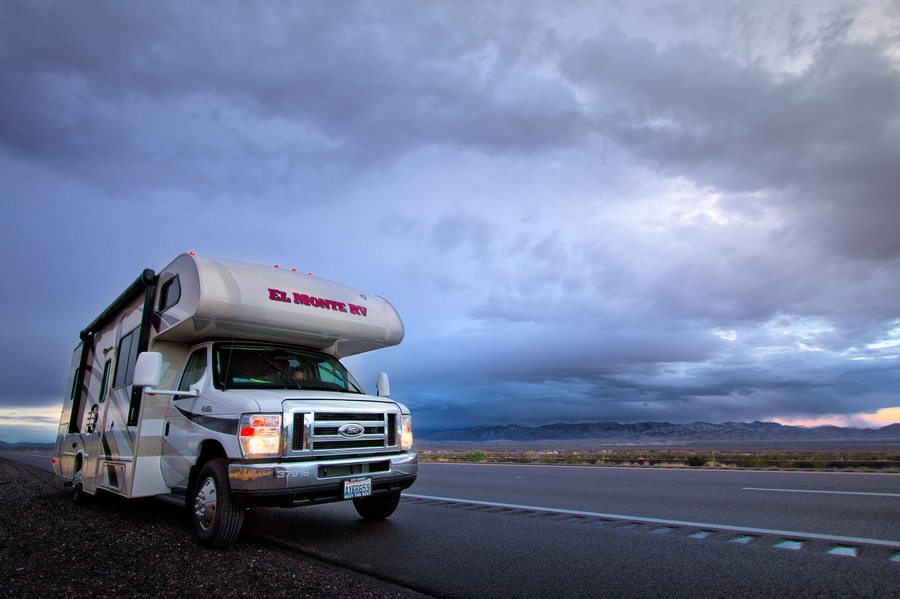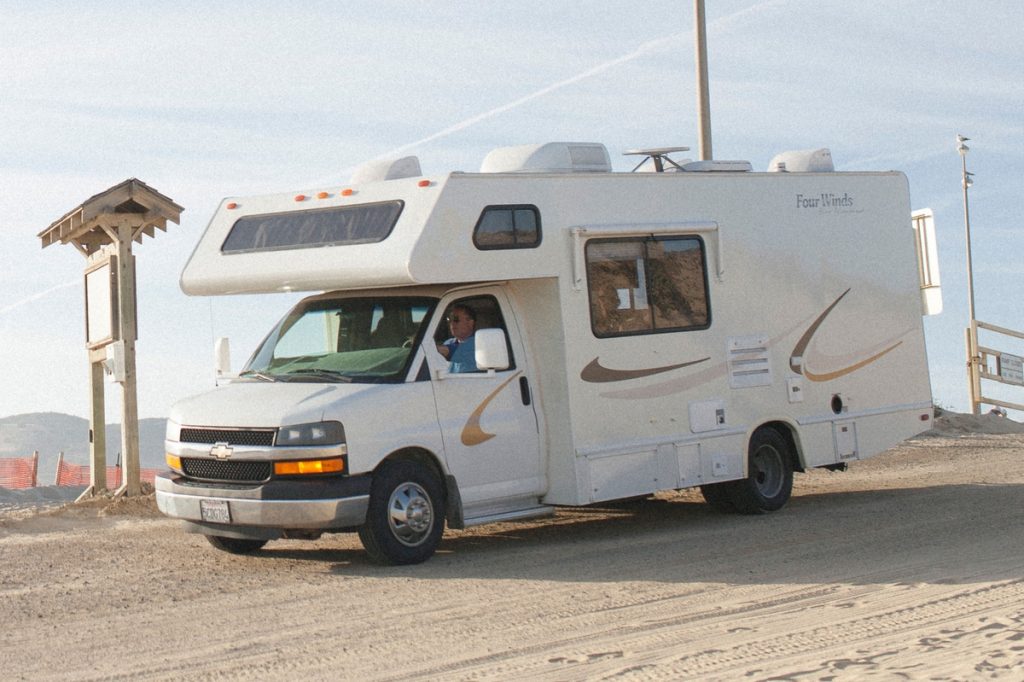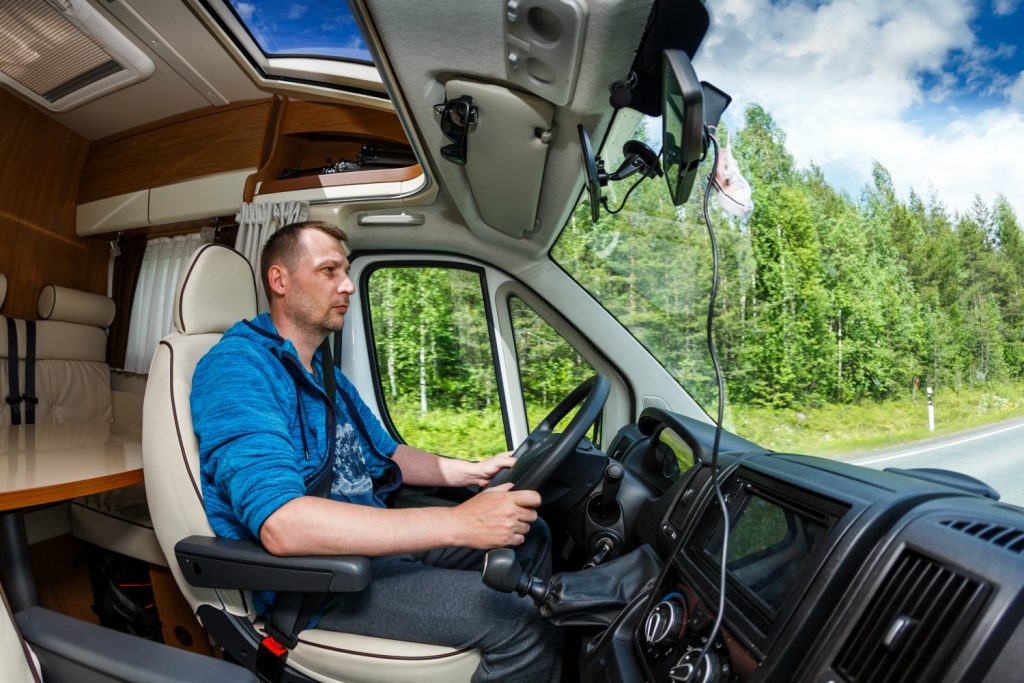Beginner’s Tips For How To Drive RV

Driving an RV comes naturally for many. Once you’ve driven it a few thousand miles or so, it starts to feel just like driving an SUV or even a sedan. The first time driving an RV, however, requires special care and concentration. You wouldn’t let your child bike down the driveway on the first day. Nor would you let your teenager drive on the highway their first go around. Likewise, you should take it easy the first time you’re driving an RV. Stick to a parking lot at wide, empty stretches of road.
It can be intimidating operating such a large, metal, death box. This can make some drivers anxious and forget to familiarize themselves properly with their motorhome before getting behind the wheel. It’s okay to be nervous, it implies a willingness to learn. But when nerves begin to affect judgment and inhibit focus, they become dangerous. Let this guide take you from standing in front of an RV for the first time all the way to driving one.
Guide to Driving an RV for Beginners

Tips for Preparation – Before You Drive
Prior to putting your RV in gear, you need to take several steps to ensure your own and other’s safety on the road. The first is to know the width and height of your vehicle. Failing to do so can result in accidents ranging from embarrassing to life-threatening. Width is less problematic, but if you have an caravan of over 102 inches in width (8.5 feet) then you’ll mainly be restricted to highways in the following states:
- Alabama
- Arizona
- Delaware
- Florida
- Georgia
- Illinois
- Kentucky
- Louisiana
- Maryland
- Michigan
- North Carolina
- West Virginia
Vehicle height is something you’ll have to keep in mind on a more regular basis. Knowing your clearance height is the only thing keeping your RV from being decapitated by a bridge. It’s your responsibility to be on the lookout for low overpasses, the majority of which are clearly labeled well in advance.
If you’re unsure of your clearance level, make sure to measure from the highest point to the ground. Write this down on a sticky note and place it somewhere clearly visible from your driver’s throne. You can also check your owner’s manual for measurements, but keep in mind this doesn’t include any accessories you may have on top (beware of air conditioners!).
Take all the same measures you would when driving an ordinary car for the first time. Adjust the mirrors. Unlike in a car, the side mirrors are your essential source for seeing rearward, as the rearview mirror is useless for navigational purposes in an RV. Another major difference will be the size of your blind spot. RV’s have much larger ones than cars do. It’s important to monitor your mirrors frequently to watch out for vehicles that may like to take refuge in your blind spot.
Lastly, move the seat to a position that allows you to comfortably command all controls. Driver’s seats in RVs can be adjusted in more ways than those in standard cars, so take your time playing with the switches and buttons until you sit like Goldilocks in your metal death box–just right.
Tips for Navigation – While You’re Driving

This might sound dumb, but driving an RV is the same as driving a car, it’s just bigger. See, I was right. And if you want to try our RV you can also book by our rv park reservation software.
Maneuvering an RV requires much more space than you’re accustomed to driving a sedan, truck, or van. Just as you’ve probably noticed bus drivers do when you ride public transit, turning requires taking your RV further out into the intersection before you begin swinging it around the corner. Failure to do so could result in running over the curb, a person, or, worse, a puppy (we all know it’s worse).
To avoid doing so, we recommend starting out in an empty parking lot and investing in a few traffic cones to practice with. They’re great for practicing turns, backing up, and the dreaded act of parallel parking. Reading this guide will only get you so far. At the end of the day, there is no substitute for real-world experience. That’s what hiring managers keep telling me during job interviews before rejecting me. If only I would have planned ahead.
Speaking of which, you still have time to. It’s important to plan your route to ensure you won’t have to navigate any areas that may make you feel uncomfortable. Don’t feel bad about driving slow. As you well know, other drivers will politely acknowledge that you’re learning and will surely be voicing encouragement in their own vehicles. Just kidding, they’ll be cussing at you and flipping you off like always. Pay them no mind. They are stinky toot cabbages.
Here are a few things you should keep in mind before you drive an RV. The first is that there is a slight delay between when you press down on the brake pedal and when your RV begins slowing down. This delay of up to a half second can feel much longer when you’re used to having a stopping distance of 150 feet at 60 mph. Learn to give yourself more space.
Yes, you’ll probably definitely get cut off by people who think your following distance is the perfect spot for them (no really, it’s impossible to underestimate the stupidity of other drivers and their penchant for putting lives at risk to save a few seconds). It’s better to arrive a few minutes later, however, than to tailgate and cause an accident. Be patient, stay in the right lane, and drive a bit slower than everyone else. Also read here some another beginner’s tips.
Driving an RV is a cinch. Once you get accustomed to being so high off the ground, you’ll grow to love the feeling of power that accompanies it. Cruising by, so high, you’ll wonder why you waited so long to fly, no lie. Yes, you’ll have fun driving an RV. Just remember to plan your route ahead of time, make wide turns, and keep a safe following distance. The rest will come naturally.







